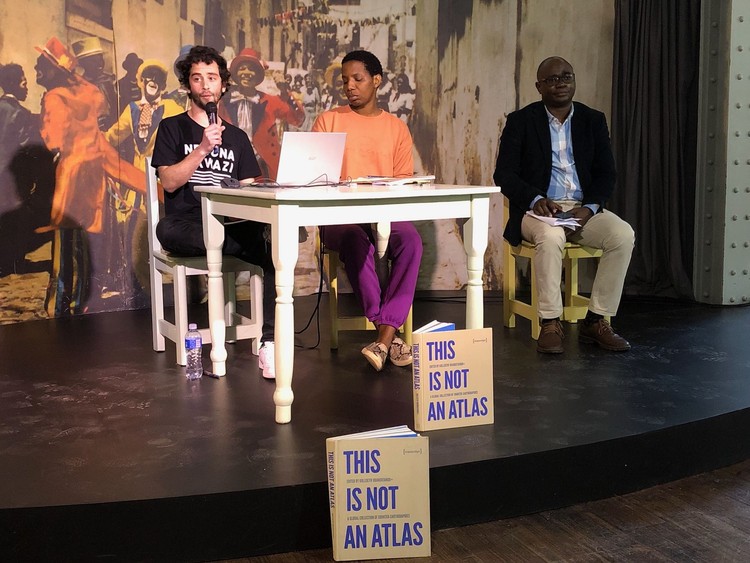Activists claim thousands of parcels of public land under-used in Cape Town
Ndifuna Ukwazi launches online interactive map to put pressure on government to address land issues
Ndifuna Ukwazi researcher Nick Budlender, land and housing activist Nikelwa Maqula, and Farai Mtero from the Institute for Poverty, Land and Agrarian Studies, at the launch of the People’s Land Map. Photo Mary-Anne Gontsana
- Ndifuna Ukwazi launched its online interactive People’s Land Map on Friday.
- The mappers identified about 2,700 parcels of vacant and under-utilised public land comprising 128km2 in the Cape Town municipal area.
- The organisation says this disproves the repeated claim by government that there is no public land available for affordable housing.
Housing advocacy organisation Ndifuna Ukwazi (NU) says it has identified 128km2 of vacant and under-utilised public land in the Cape Town municipal area. This is according to its People’s Land Map, launched on Friday as part of a three-day Urban Land Justice Gathering held at the District Six Homecoming Centre.
According to NU, 1,945 parcels of vacant and underutilised land are owned by the City of Cape Town, 522 by the province, 215 by national government, 58 by state-owned enterprises, and 37 under other public spheres.
Of the five largest land parcels, one is owned by the City, the province, national government and the Airports Company, and one co-owned by the province and national government.
The online interactive map was developed over a number of years in collaboration with civic technology organisation, OpenUp.
NU says the map demonstrates that there is enough publicly owned land available to help address the housing backlog and address spatial apartheid in the city.
NU researcher Nick Budlender said, “An argument that is always made without any evidence provided, is that there is no public land available for affordable housing. So, we had to bring the facts and the evidence to show that there is public land available.”
“We are not saying that all of this land is suitable for housing. We did not investigate each and every piece with the level of detail required, but what the map proves absolutely, conclusively, is that all spheres of government in Cape Town are failing to use public land in a just sufficient or sustainable manner.”
Budlender said the process of developing the map started in 2016. They had to look at aerial images on Google Maps, identify the parcels of land, and investigate the ownership of the different land on a case-by-case basis.
He said there was still a long way to go because some of the land had been developed or ownership changed, it was a good tool to apply pressure on government.
Land and housing activist Nikelwa Maqula said, “The question of land ownership still remains central … We are under the illusion that land belongs to government, when in fact it belongs to us. Government is just the custodian.”
“Having access to public land means addressing the land that was stolen, it means dignity,” said Maqula.
Carl Pophaim, mayoral committee member for human settlements, told GroundUp that the City owned various types of land and followed due process to determine its future uses, including for municipal purposes and service delivery.
“The City has a dedicated focus on releasing land for affordable and social housing,” he said.
“Some 6,500 social housing opportunities and potentially 50 City-owned land parcels are in the planning pipeline city-wide.”
“The process of releasing land for affordable housing is subject to a range of statutory, regulatory and feasibility hurdles,” he said.
Support independent journalism
Donate using Payfast

Don't miss out on the latest news
We respect your privacy, and promise we won't spam you.
© 2023 GroundUp. This article is licensed under a Creative Commons Attribution-NoDerivatives 4.0 International License.
You may republish this article, so long as you credit the authors and GroundUp, and do not change the text. Please include a link back to the original article.
We put an invisible pixel in the article so that we can count traffic to republishers. All analytics tools are solely on our servers. We do not give our logs to any third party. Logs are deleted after two weeks. We do not use any IP address identifying information except to count regional traffic. We are solely interested in counting hits, not tracking users. If you republish, please do not delete the invisible pixel.

